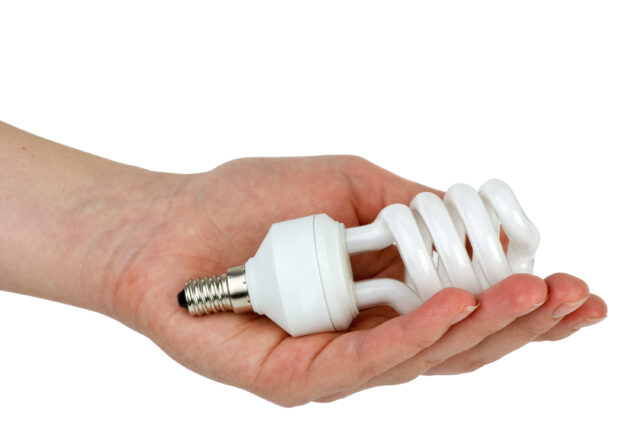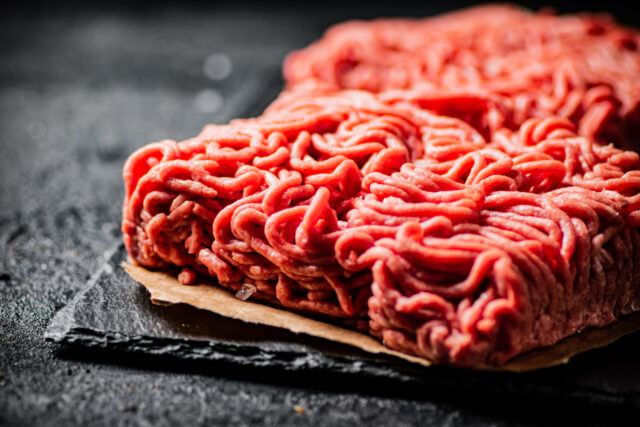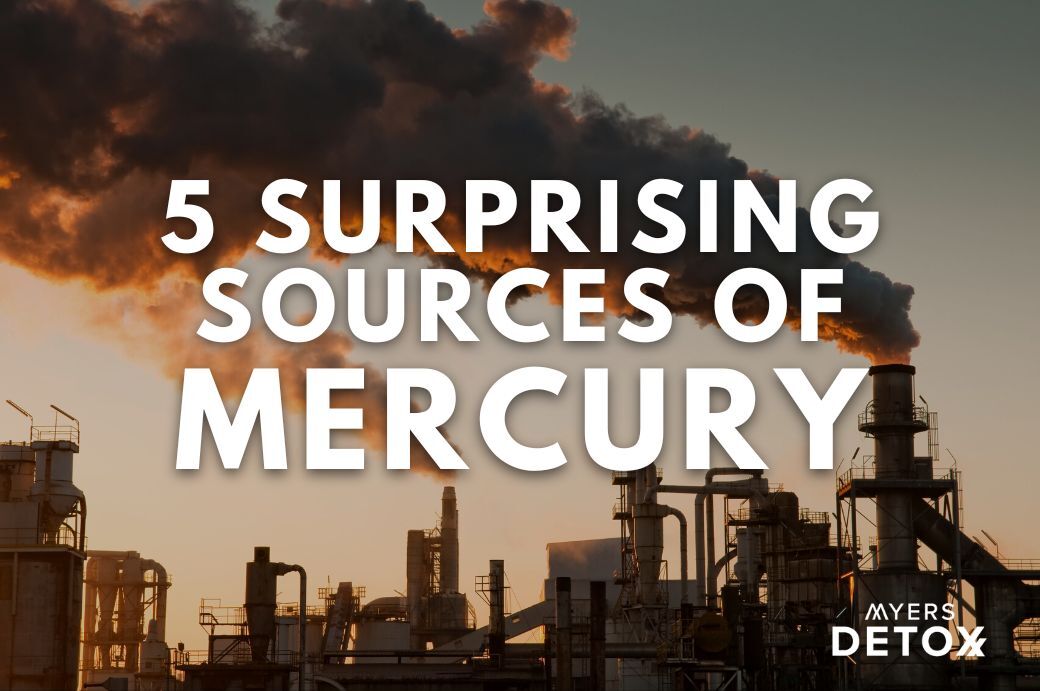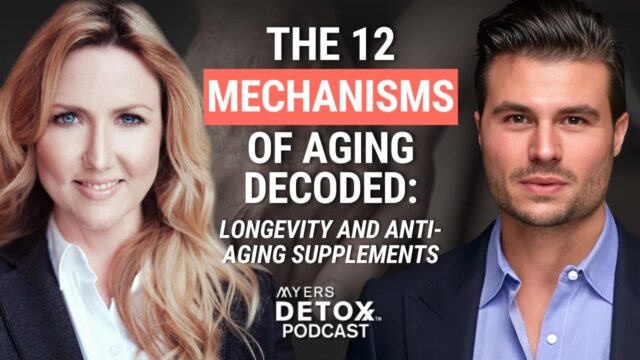By now, pretty much everyone is aware that mercury is a poisonous toxin, but you likely don’t realize how ubiquitous this heavy metal still is in our environment.
While we have come a long way in removing mercury from common everyday products and devices in the last several decades, mercury still lurks in our environment and is often hiding in plain sight.
In this article, you’ll learn:
- Why even small levels of mercury exposure could cause significant harm
- Where in your home mercury is likely still hiding
- How steering clear of fish is not enough to avoid mercury in the food supply
- The number one thing you need to do every day to help your body remove mercury
The Dangers Of Mercury
Like all heavy metals, mercury toxicity comes with a host of harmful effects.
Mercury is well known to bioaccumulate, which means it sticks around in your cells and tissues and can build up to dangerous levels over time.
The problem with mercury exposure and toxicity is that most sources of mercury come from places and products that we come into contact with frequently. This means that, as opposed to an acute toxic insult, mercury slowly works its way into your body over time. This can make the effects of mercury harder to pin down because you may not even be aware that you’re being exposed.
Mercury has a high affinity for the nervous system and is associated with neurological issues in both children and adults. However, mercury can also negatively impact several other systems, including[1]:
- Heart health
- Kidneys
- Lungs
- Reproductive organs
- Immune system
- Cellular health
- And more
While contaminated fish is the most well-known source of mercury exposure, several other hidden mercury sources could contribute to toxicity in your body. Knowing where mercury may be sneaking into your system is crucial for your health and the health of your loved ones.
5 Hidden Sources Of Mercury
#1 Coal-Burning Power Plants

Coal-burning power plants are the largest contributor to mercury contamination in our environment. Coal naturally contains mercury, and when coal is burned, the mercury is released into the atmosphere.
Ultimately, the mercury will fall down to the earth and end up in our soil and water.
While the EPA made efforts in 2011 to reduce the mercury emissions from coal-burning plants, they’ve received pushback and have had ongoing revisions to their guidelines[2].
Ultimately, it’s safe to say that mercury is still being emitted from power plants, and this exposure could contaminate the air, waterways, and soil surrounding the plants[3].
In fact, studies show that foods grown in soil in close proximity to coal-burning power plants contain toxic levels of mercury. Amaranth, lettuce, spinach, tomato, eggplant, and cucumber and just a handful of the plant foods that have been tested[4].
#2 Fillings

For decades amalgam fillings were the standard of practice, and believe it or not, some dentists still use them today. While most dentists have moved over to composite, if you’ve had fillings in your mouth for many years, there is a good chance they’re amalgam.
Amalgam contains mercury, and the risk with these types of fillings is that they continuously release small amounts of mercury vapor into your mouth. To make matters worse, after about 15 years, the amalgam fillings begin to break down, further increasing mercury release[5].
New research also suggests that EMF from sources like WiFi and cell phones may increase the amount of mercury released from your fillings[6].
Amalgam fillings are silver in color, while composite has a similar color to your tooth. If you have silver fillings in your mouth, be sure to contact your dentist immediately to have them switched out for composite.
#3 Cosmetics

There are a handful of cosmetic products on the market that are known to contain mercury, with skin-lightening creams coming in as the biggest offender.
Skin-lightening creams are often marketed as a way to reduce the appearance of freckles, blemishes, and aging spots or just generally to lighten the skin. Generally speaking, these products are typically manufactured abroad and sold illegally in the US – but they’re still pretty easy to come by, and most consumers aren’t aware that they don’t meet US regulations[7].
If you’re concerned that your products may contain mercury, check the label for:
- Mercurous chloride
- Calomel
- Mercuric
- Mercurio
- Mercury
These are the most common ingredient names.
#4 Light Bulbs and Older Household Appliances

This one may come as a surprise, but did you know that fluorescent and neon light bulbs contain mercury? While the mercury is held within the light bulbs, if they crack or break, it can contaminate your home’s surrounding air.
In fact, the EPA has strict guidelines for disposing of fluorescent lights for this very reason.
But light bulbs aren’t the only common household appliance that contains mercury; other sneaky sources of mercury in your home may include[9]:
- Thermometers (non-digital)
- Older electronic appliances like space heaters
- Clothing irons
- Gas-fired ovens
- Water heaters
- Furnaces
- LCD screens and monitors
#5 Factory-Farmed Meat

When fish is deemed unfit for human consumption due to high levels of mercury, it’s often shipped off for animal feed.
Of course, when the animals you consume are consuming contaminated fish – where do you think all of the toxins end up? That’s right; they ultimately get stored in your cells and tissues.
As mentioned, mercury bioaccumulates in tissues. Therefore, when cows consume feed that’s riddled with mercury, it will build up in their bodies. If you then consume the meat from those cows, all of the toxins in their tissues get transferred to yours.
But mercury isn’t the only heavy metal to be aware of in factory farming; studies also show that factory-farmed meat contains high levels of cadmium and lead[10].
The best way to avoid toxins from meat is to always buy organic,100% grass-fed whenever possible.
How To Mitigate Mercury Toxicity
The above five mercury sources are only the tip of the iceberg. Our environment is riddled with heavy metals, and unfortunately, it’s difficult to pinpoint exactly how much of each metal is contaminating our food, water, and products.
While there are many steps you can take to protect yourself and your family from the obvious ones, there is no escaping mercury completely at this point.
That’s why in addition to trying your best to avoid mercury, you must also ensure you’re adequately supporting your body’s natural detox mechanisms so that it can eliminate this environmental contaminant.
As an expert in heavy metal detox, I take this subject very seriously and have done hundreds (if not thousands) of hours of research on the subject. What I’ve learned is that heavy metals can be very challenging to help the body release – but it isn’t impossible.
I created CitriCleanse Toxin Binder with heavy metals in mind to create a formula that will help your body gently surround and release toxins (like heavy metals) that have become trapped in your cells and tissues. Unlike some other toxins that are more readily released, heavy metals like to bury away deep in your tissues, which means it takes some special attention to loosen their grip.
The CitriCleanse formula contains only three ingredients, but each one has its specific role in assisting your body’s natural detoxification processes. This simple yet powerful formula boosts your detox pathways in three unique ways:
- Mineralization – Humic and fulvic acid flood your body with minerals that help to push heavy metals out of your cells and tissues.
- Mobilization – Cilantro extract supports the liver and helps your body mobilize heavy metals from your nervous system, bones, and cells, freeing them from the toxic burden and allowing them to function optimally once again.
- Binding – Grapefruit pectin acts like a net, catching the toxins and heavy metals mobilized by the other two ingredients. This allows your body to remove the heavy metals as wastes, avoiding their reincorporation into cells.
With the help of CitriCleanse, your body can gently release and transport impurities so that they are prevented from being reabsorbed or redistributed elsewhere in your system, thus mitigating the accumulation of further toxicity.
The best part about incorporating CitriCleanse into your life is that all it takes is 30 seconds a day. This isn’t some highly involved detoxification process; you just add the powder to liquid and then go about your life.
Takeaway
While we’ve come a long way in removing mercury from common household products, there is still a long way to go before we can say we’re safe from this toxin. Even as manufacturers continue to produce mercury-free products, this heavy metal still exists at toxic levels in our environment.
Choosing to eat high-quality food and drink filtered water is the first step in reducing the impact of mercury on your body, but you also have to incorporate some serious heavy metal detoxification on a regular basis if you really want to live mercury-free.
CitriCleanse offers a simple and efficient solution that takes less than 30 seconds a day.
*These statements have not been reviewed by the FDA. CitriCleanse is a dietary supplement and is not intended to diagnose, treat, cure, or prevent any disease. It is not intended to replace any medication or healing modality prescribed by your medical doctor. Please consult with your doctor before beginning a new supplement regimen.









